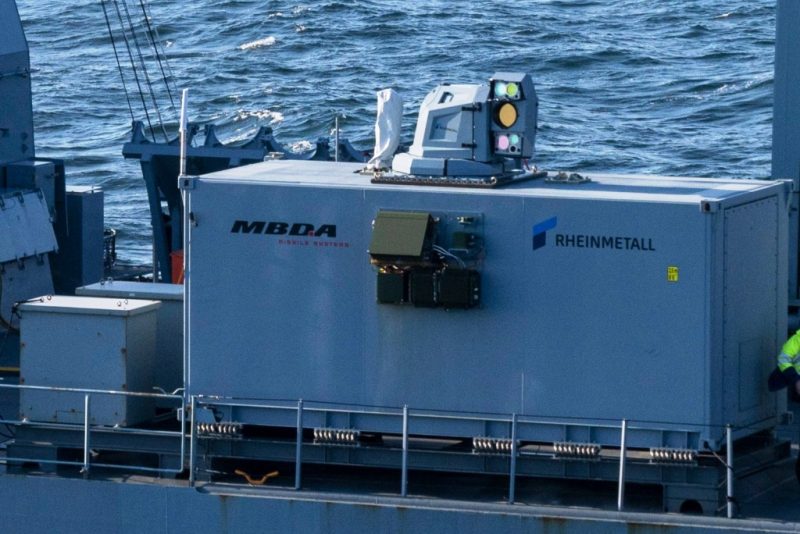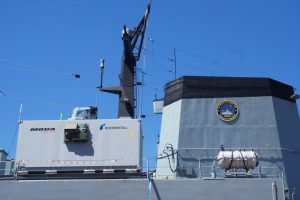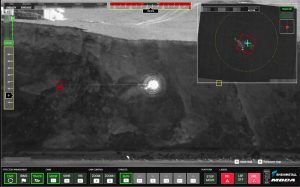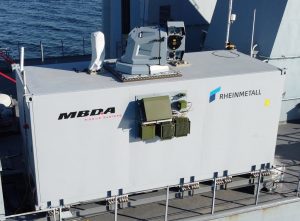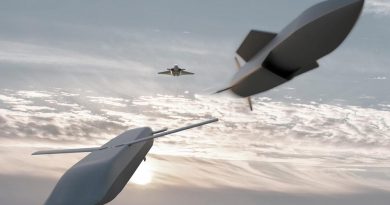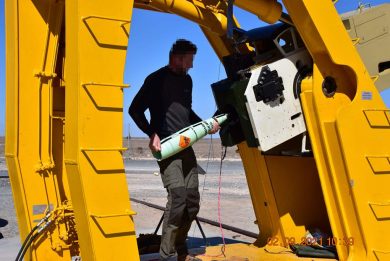MBDA Deutschland provided new details on the Laser Weapon Demonstrator developed in cooperation with Rheinmetall and recently tested by the German Navy
The Federal Office of Bundeswehr Equipment, Information Technology and In-Service Support (BAAINBw) recently completed the at sea trials phase of the Laser Weapon Demonstrator (LWD) developed by the High-Energy Laser Naval Demonstrator Working Group consisting of MBDA Deutschland GmbH and Rheinmetall. New details were provided on the system itself as well as on the trials
Based on a contract awarded in late December 2021 by the BAAINBw, the High-Energy Laser Naval Demonstrator Working Group has developed and built a 20 kW LWD which was integrated on board the Sachsen F124 frigate in June 2022, and conducted trials for about one year from October 2022 until September 2023.
“This has been an important step towards an operational high-energy laser system,” said Doris Laarmann, Head of Laser Activities at MBDA Germany, speaking at national and international media during on a visit to MBDA Deutschland’s in Schrobenhausen, the company’s main site in Germany.
“MBDA Deutschland was responsible for target acquisition and tracking, the control console and the interface of the LWD with the guidance system,” she continued. Rheinmetall’s area of responsibility was the high-energy laser source including its periphery, the alignment system, the beam guidance and the demonstrator container, as well as the mechanical and electrical integration of the demonstrator on the deck of the Sachsen frigate.
“To meet the requirement for the naval demonstrator, based on LWD workshare, MBDA developed an high performance tracking system with a number of unique features. As typically, the effects of a laser weapon correlate directly with the laser intensity projected steadily onto a selected target aimpoint and to the system’s tracking performance. The former is influenced by many factors, such as the level of atmospheric disturbances, the engagement range, the laser power, the aperture size, the beam quality and the pointing jitter, the latter being the ability to focus the laser steadily on the selected aimpoint). The system’s tracking performances are a clear differentiator, as only a highly accurate, dynamic high performance tracking allows for the precise selection of susceptible aimpoints for effect delivery,” she explained.
“MBDA has developed a two-stage tracking consisting of a coarse tracking (CT) to follow the target and an additional fine tracking (FT) to track a specific aimpoint on the target,” she stated. The latter uses an active pulse laser illumination at an eye-safe wavelength, gated viewing techniques providing an improved all-weather and low signature target tracking capability alongside robustness against battlefield and interaction effects throughout the whole engagement.
“Tracking procedures were extensively tested in different environments and with different test equipment to prove the accuracy and robustness of the company’s developments. Illumination in eye-safe wavelengths greatly reduces risks of collateral damages, easing the logistics of tracking tests above the horizon,” she highlighted.
The resulting LWD turret which is characterized by an illumination laser and an high-energy laser using separate channels in an off-axis configuration with point alignment, was installed on a standard ’20-foot container hosting the whole LWD package and installed on board the Sachsen frigate in June 2022. Preparation activities lasted until October of the same year, when the BAAINBw together with its Defence Technical Offices 71 and 91 alongside the industrial team, began end-to-end laser trials.
“During these trials, which comprised six campaigns of two weeks each that extended for nearly a year, the LWD has been employed in engagements to test the limit of the system against a variety of targets,” Doris Laarmann explained. In addition to different drone types, from DJI Phantom and upward, the LWD was also tested against asymmetric threats such as the challenging Jetski, alongside RHIB inflatable boat, but also ground targets such as Quad bike, Wolf military vehicle and mortars, no additional details on engagement results being provided. According to the industrial team, the combat effectiveness was proven in increasingly complex scenarios and under realistic operating conditions. The LWD has proved to be capable of successfully engage targets in a maritime environment, having performed more than one hundred firing test aboard the Sachsen platform. “The conclusion drawn by the Bundeswehr are that the technologies are ready and proven,” and therefore the next step is expected to be the development contract but, “the customer is looking to reduce dimensions and weight, and to get higher performances to cope with a wider range of targets.” With the trials conclusion also the contract was completed, and the demonstrator is currently undergoing detailed examination, after which it will be transferred to Bundeswehr Technical Centre 91 in Meppen and kept there for potential new trials. MBDA is waiting what will be the requirements for the follow-on phase.
Photos courtesy MBDA/Rheinmetall

